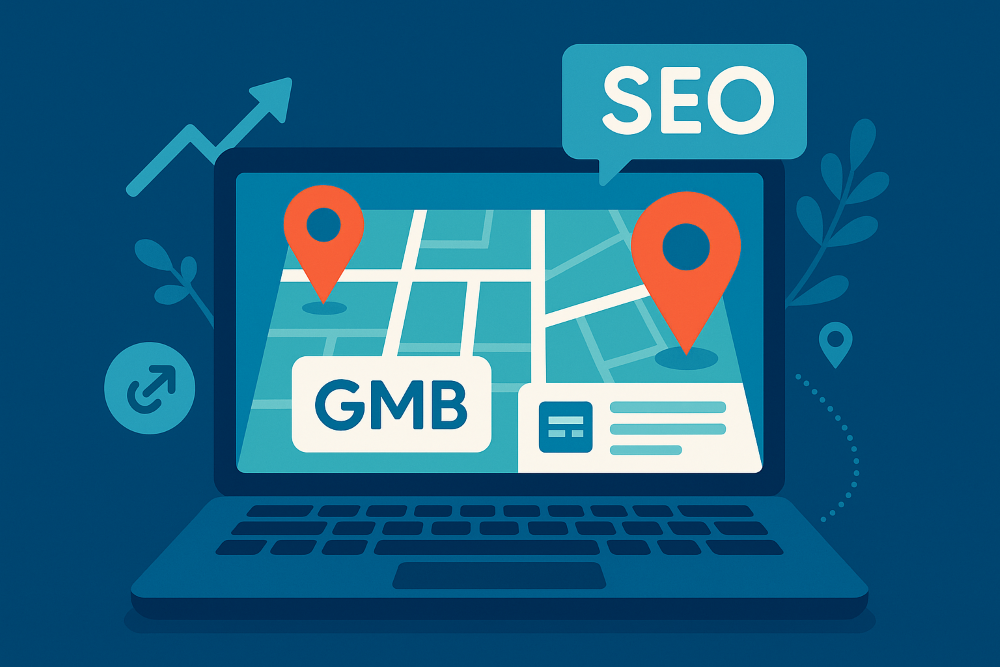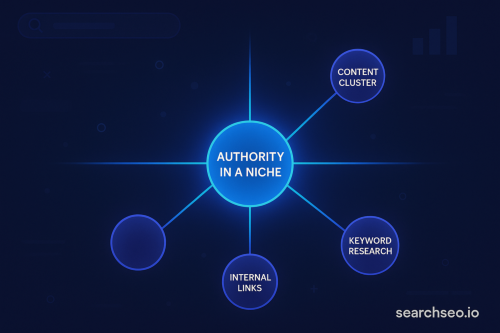Google Maps SEO is the process of optimizing your Google Business Profile (GBP) so your business ranks higher in local search results and the Google Map Pack. This placement is premium digital real estate. When you appear here, you reach customers who are nearby, motivated, and ready to call or visit.

Google’s local ranking algorithm relies on three primary factors:
- Relevance: How well your profile matches the searcher’s intent.
- Distance: The proximity of your business to the searcher’s location.
- Prominence: Your online authority, built from reviews, backlinks, and mentions.
Showing up in the Map Pack helps you:
- Get discovered before your competitors
- Build trust with a complete, credible profile
- Drive calls and clicks from high intent users
- Increase real foot traffic
- Reduce ad spend by improving organic visibility
How to rank higher on Google Maps
Here’s a proven, structured approach to boost your Google Maps local SEO rankings.
Claim and verify your Google Business Profile
You can’t optimize what you don’t own. Claim your GBP via Google Business Profile Manager and complete verification, often by postcard, phone, or email. Without verification, key features like review replies and insights stay locked.
Pro tip: Use the same Google account tied to your website’s Google Search Console for smoother integration.
Optimize every section of your profile
Google rewards complete profiles. Fill out every available field.
Key elements to nail:
- NAP (Name, Address, Phone): Match exactly across all listings.
- Categories: Choose a primary category that best represents your business, plus relevant secondary ones.
- Description: Write a keyword-rich, customer-focused summary. Sprinkle in terms naturally.
- Hours of operation: Include special holiday hours.
- Services & products: Detail offerings to improve relevance for searches.
- Photos & videos: Add high-quality, authentic visuals to boost engagement.
Keep NAP consistency across the web
Inconsistent business information can hurt your local rankings. Audit your details across:
- Yelp
- Bing Places
- Industry directories
- Your own website
Tools like BrightLocal and Whitespark make this easier.
A simple graphic comparing consistent vs inconsistent NAP is helpful here.
Encourage and respond to reviews
Reviews aren’t just social proof, they’re a direct ranking factor. The more high-quality, relevant reviews you have, the stronger your profile’s prominence.
Best practices:
- Ask customers at the point of service or in follow-up emails.
- Include direct links to your review form.
- Respond to all reviews within 48 hours, thank happy customers and address concerns politely.
- Naturally incorporate SEO traffic or service keywords when appropriate.
Use local keywords in your content
Boost relevance and local SEO optimization by incorporating Google maps terms in:
- Your GBP description.
- Google Posts and updates.
- Your website’s local landing pages.
Example: Instead of “We’re a bakery,” try “We’re a Brooklyn bakery specializing in custom cakes and gluten-free pastries.”
Add high-quality visual content
Photos influence clicks and conversions. According to Google, businesses with photos get 42% more requests for directions.
Include:
- Exterior shots to help people find you.
- Interior shots to showcase ambiance.
- Product/service images.
- Team photos to humanize your brand.
Build local backlinks and citations
Backlinks from locally relevant sources reinforce your local SEO strategy authority.
Ideas:
- Sponsor local events or charities (get listed on their websites).
- Collaborate with nearby businesses for co-marketing.
- Submit press releases to local news outlets.
Post updates and offers regularly
Google Posts are mini-updates in your GBP that keep your profile fresh and engaging.
Post:
- Special offers or discounts.
- Event announcements.
- Blog snippets (great place to link to your multilingual SEO or Google autosuggest guides for internal traffic flow).
Track performance and refine
GBP Insights shows search queries, profile views, clicks, and calls.
- Spot high-performing keywords and emphasize them.
- Adjust photo types based on engagement.
- Use a GMB Traffic Bot to automate data monitoring and react quickly.
SEO Google Maps ranking advanced tips
- Embed Google Maps on your site’s contact page, while it doesn’t directly boost rankings, it improves UX.
- Mobile-first website: Over 60% of map searches happen on mobile. Ensure fast load times and responsive design.
- Avoid duplicate listings: Merge or remove extras to consolidate authority.
Best practices at a glance
- Fill in every GBP field completely.
- Keep NAP consistent everywhere.
- Respond to reviews promptly.
- Post weekly updates.
- Earn backlinks from local sources.
- Track and adapt using GBP Insights.
Common pitfalls to avoid
- Adding keywords to your business name
- Using virtual or PO box addresses
- Ignoring photos or reviews
- Allowing outdated NAP listings to accumulate
Final thoughts
Google Maps SEO is not a single task. It is an ongoing system of proving relevance, maintaining trust, and signaling authority. When you optimize your GBP, clean up your citations, collect reviews, and support everything with strong CTR signals, you give Google every reason to rank your listing higher.
If you want to accelerate results and see how CTR influences your visibility, start with the free GMB CTR trial from SearchSEO. You will get verified, trackable, real user behavior signals straight into your listing. Start your free GMB CTR trial today.


.svg)

.svg)
%201.png)








.svg)